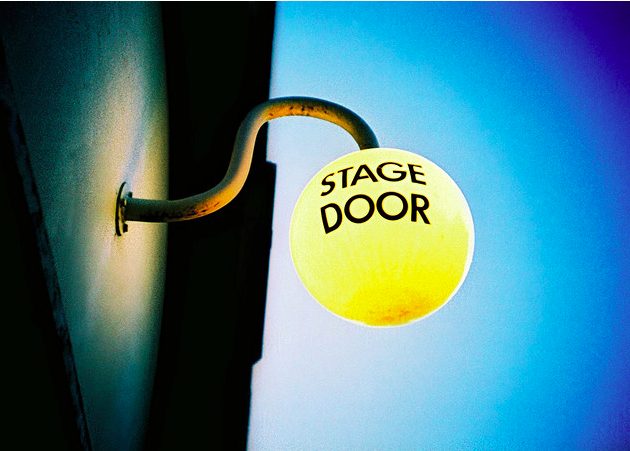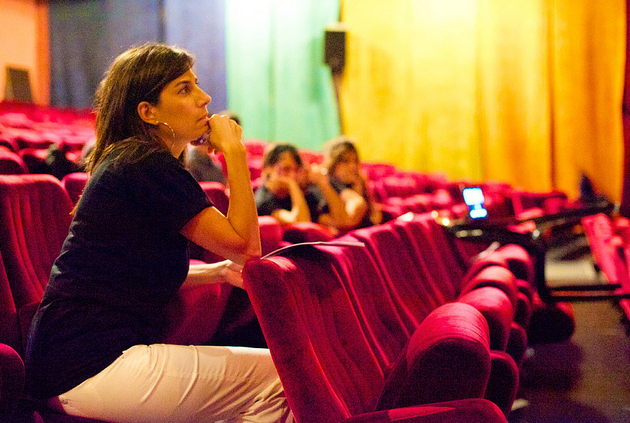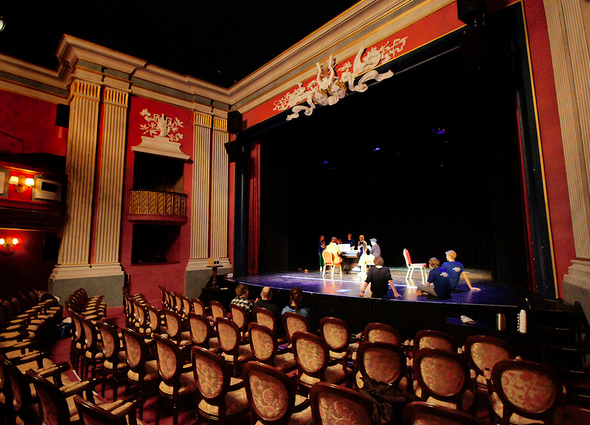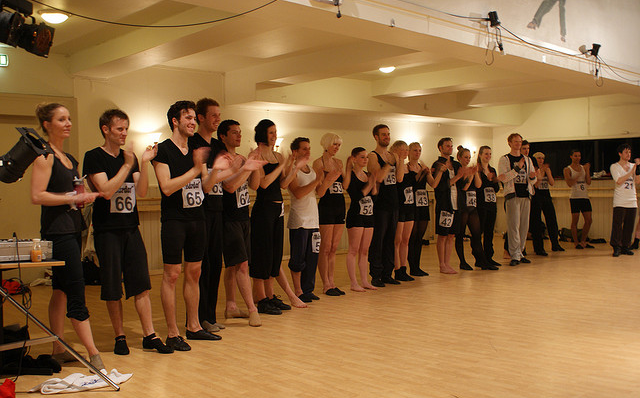Auditions are Two-Way Streets
A personal essay on audition techniques that include state of mind as well as physical skill.
[fblike]
A lot of questions about auditioning have popped up, so I thought I’d briefly write about this one specific audition technique residency we led in Fall 2011.
I was working with juniors and seniors in a private high school preparing their audition monologues for colleges. It had been a while since I had personally auditioned for anything as a performer. I think the last one was for Cirque du Soleil three years ago (got to Round 3 and then wasn’t a good fit). But stepping into that high school black box, it all came rushing back to me: nerves and the fear of judgment. Mix that with stressed out over-achievers having hormone rushes and it’s a powder keg.
They thought their monologues were going to be reviewed and coached all week. They needed something deeper than that. So, I spent the week focusing on two things: “How to look at auditions” and “Who are you showing them?” With my focus on sole ownership and my recent work inside this student-led program at Goddard, I felt stronger talking to them about these points. We are taught early to look to someone else for the thumbs up or down on how we’re doing. Auditions play right into that.
Actors must come into auditions on a healthier foot than “please give me this job/college spot, I beg of you.” If the actor already feels this sense of “my fate is in a stranger’s hands” then how can he/she feel strong enough to perform, to be vulnerable on stage in front of that stranger? Forced acting and false energy is the direct product of this feeling of helplessness.
We talked as an ensemble about other ways to view the two minutes they have in this room with strangers. How is it so different from a play? Can you view this moment as an intimate performance of a short play in front of two to three lucky audience members? You are generously giving your time to show them your interpretations of a piece of theatre that inspires you. Period. What happens after that is not up to you. The only things you can do are show yourself honestly and show your work honestly. How else will these strangers be able to feel if you would benefit from their school or excel and inspire the company? It is a mutual audition. They are looking at you and you are looking at them.
The next step was an altered clown exercise called “Tag and Crown”. The actor goes off stage and takes a moment to get into a neutral place. She enters the space, sees the entire audience in the eye, sees center stage, goes to center stage, sees the entire audience in the eye – here’s the alteration – she says her name, the title of the piece, says thank you, sees the exit, goes to the exit, before leaving she sees the entire audience in the eye and then exits. The breath is important. For the exercise, it must be deliberate between every step to break up the nerves and the natural push to speed through the process.
This is extremely difficult for the actors and as a result they go either to a robot neutral, devoid of anything resembling them, into a hyperactive persona that’s running for president or selling soap on TV. After working through some physical tension, releasing the jaw, truly seeing everyone in the eyes and observing nervous mannerisms, the actor is able to try again.
Throughout the week, this structure was expanded internally, adding the first three lines of the monologue and then finally the entire piece. They also worked on creating a physical spine for their character so that we could see the body shift from “student at an audition” to “character”. They chose three characteristics directly pulled from their interpretation of the monologue to build upon, two physical and one emotional. Moving around the space as an ensemble, they started to breath differently, gaze differently and play with altered speech rhythms in response to the new movements. This subtle change allowed the student to transfer their focus to a performance and try and leave the audition reality as soon as they had announced their piece.
It was a lot to do in a week and I think it might have shifted their thought process on what it takes to audition. So many of them had a protective persona of “perfect” or “go-getter” and yet their daily check-ins, the beginning moments in class where everyone announces how they feel right this second, were of stress or not knowing how they felt. By the end of the week, it was wonderful to see the students start to present themselves inside the “Tag and Crown” exercise. Because the main point of the exercise was starting to sink in: the performer on stage, vulnerable and present, can be enough; each performer is unique. My hope is they are working on now presenting themselves honestly.




